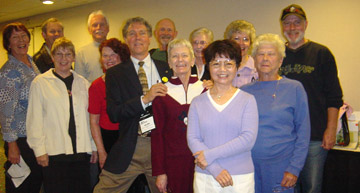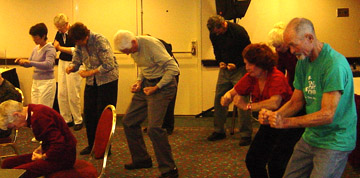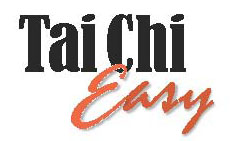
Copyright © 2005-2010
All Rights Reserved
TaiChiEasy.org
|
|
National
Expert Meeting on Qi Gong and Tai Chi Consensus
Initiative Process
The funding from the Archstone Foundation provides
for:
- The National Expert
Meeting on Qi Gong and Tai Chi and preparation of the Consensus Document.
- Announcement of the
Expert Meeting and release of the Consensus Document at the 2006 annual
conference of the National Council on Aging/American Society on Aging
in Anaheim, CA with a media event and press conference.
- Presentation of the
meeting findings and the consensus report at three national symposia.
- The implementation of
two demonstration projects based on the recommendations.

Dr.
Roger Jahnke with a devoted group of Qigong and Tai Chi practitioners
who demonstrated for the press on March 18, 2006 at the NCOA/ASA conference
in Anaheim, CA.

What's Next?
As a part of this project, the National Blueprint Office will sponsor
two community demonstration projects that will be charged with implementing
a Qi Gong and Tai Chi program that is consistent with Expert Meeting consensus
findings and recommendations.
Sample Qi Gong and Tai Chi Program Content and Structure
Course Content
- Dynamic body movements to promote balance, flexibility, strength,
and range of motion while sitting, standing or walking.
- Static standing postures for balance and concentration.
- Static sitting postures for foundation to quiescent meditation
- Breathing practices to promote oxygenation, relaxation, and
concentration.
- Meditation practices for concentration and focus, fostered
by deep and/or controlled breathing.
- Information about complementary and holistic health care
(e.g. nutrition, longevity or vitality enhancement and philosophies
that promote inner peace.
Class Characteristics
- Group activities provide ample opportunities for social interaction
- Fun and enjoyment stimulated by interesting practices.
- Quiet environment for optimal movement and meditation practice.
- Safe and supportive facilities to accommodate participants of
differing physical activity levels
Ideally group programs should be offered 3 or more times per week for
about 1 hour each session. However since many facilities schedule programs
only once or twice a week, individual daily practice for at least 15-30
minutes is encouraged. Audio, video, and DVD programs for home practice
may be helpful. Also certain populations will require briefer interventions
or carefully modified practice settings for those with disabilities and
limitations.
|
|
